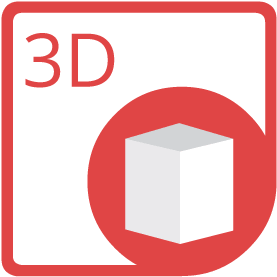
Convert JT to U3D via Java
JT to U3D conversion using Java library without any 3D modeling software.
How to Convert JT to U3D Using Java
In order to render JT to U3D, we’ll use
API which is a feature-rich, powerful and easy to use conversion API for Java platform. You can download its latest version directly from
and install it within your Maven-based project by adding the following configurations to the pom.xml.
Repository
<repository>
<id>AsposeJavaAPI</id>
<name>Aspose Java API</name>
<url>https://repository.aspose.com/repo/</url>
</repository>
Dependency
<dependency>
<groupId>com.aspose</groupId>
<artifactId>aspose-3d</artifactId>
<version>version of aspose-3d API</version>
<classifier>jdk17</classifier>
</dependency>
Steps to Convert JT to U3D via Java
Java programmers can easily convert JT file to U3D in just a few lines of code.
- Load JT file via the constructor of Scene class
- Create an instance of U3dSaveOptions
- Set U3D specific properties for advanced conversion
- Call Scene.save method
- Pass the output path with U3D file extension & object of U3dSaveOptions
System Requirements
Before running the Java conversion code, make sure that you have the following prerequisites.
- Microsoft Windows or a compatible OS with Java Runtime Environment for JSP/JSF Application and Desktop Applications.
- Get latest version of Aspose.3D for Java directly from Maven.
Java 3D Scene Manipulation Library
Aspose.3D is a CAD and Gameware API to load, modify and convert 3D files. API is a standalone and does not require any any 3D modeling or rendering software. One can easily use API for Discreet3DS, WavefrontOBJ, STL (ASCII, Binary), Universal3D, FBX (ASCII, Binary), Collada, glTF, PLY, GLB, DirectX and more formats.JT What is JT File Format?
JT (Jupiter Tessellation) is an efficient, industry-focused and flexible ISO-standardized 3D data format developed by Siemens PLM Software. Mechanical CAD domains of Aerospace, automotive industry, and Heavy Equipment use JT as their most leading 3D visualization format. JT format is a scene graph that supports the attributes and nodes that are CAD specific. Sophisticated compression techniques are used to store facet data (triangles). This format is structured to support visual attributes, product and manufacturing information (PMI), and Metadata. There is a good support for asynchronous streaming of content. In heavy mechanical industry, professionals use JT file in their CAD solutions and product lifecycle management (PLM) software programs to examine the geometry of complicated goods.
Read MoreU3D What is U3D File Format?
U3D (Universal 3D) is a compressed file format and data structure for 3D computer graphics. It contains 3D model information such as triangle meshes, lighting, shading, motion data, lines and points with color and structure. The format was accepted as ECMA-363 standard in August 2005. 3D PDF documents support U3D objects embedding and can be viewed in Adobe Reader (version 7 and onwards). U3D format was developed keeping in view the aim to establish a universal standard for three-dimensional data storage and exchange. However, the format finds its main utilization in encoding for 3D PDF rather than being used as an interchange format. Acrobat 3D converts a supported 3D file type to either U3D or PRC upon conversion into the PDF.
Read MoreOther Supported Conversions
You can also convert JT into many other file formats including few listed below.